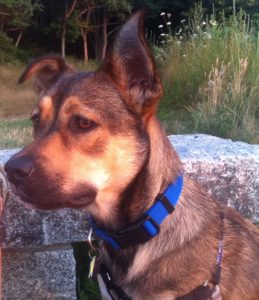Perhaps you already know this, but out there in the World Wide Web there are many websites devoted to helping people discover their pet’s ancestral DNA.
With the technological advances in DNA testing, humans have started to use it more and more to help understand better where they come from and, especially from a genealogical stand point, to help supplement or sometimes define their ancestral research.
So why not do the same for your pet?
I have a cat. Her name is Coco and she was found at 8 weeks old, back in July of 2012, wandering the streets of downtown Los Angeles with her “brother.” (I put that in quotation marks because how can you really tell with cats and dogs?)
At 12 weeks, I adopted her as my own.
But where did she come from? What is her breed or heritage? The company I adopted her from guessed she was some type of tortoiseshell cat, a very common breed here in America and almost exclusively female. It is basically a nice way of describing a multi-colored, unidentifiable cat.
So I decided to investigate the world of animal DNA testing, looking for whatever information would or could be found, especially for a little mutt like Coco. I started by asking various members of the Research Services staff to see if any of them had done their pet’s DNA. Sheilagh Doerfler, Senior Researcher, had had her dog Sable tested a few years back.
Sable’s results were that she was a Dalmatian/Rottweiler mix. They had used a system of algorithms to predict the most likely combination of pure and/or mix breed dogs in the last three generations from Sable that best fit her DNA marker pattern. They also went on to identify what breeds may have mixed in the past generations to help get a better idea of Sable’s breed ancestry (Anatolian Shepherd Dog, Norwegian Elkhound, Labrador Retriever, etc.). As there are so many dog breeds (currently 340 are recognized by the Fédération Cynologique Internationale, the world governing body of dog breeds), and so many dogs intermix, sometimes the genetic make-up cannot be traced.
Another example is Larry Stooges.[1] Larry’s parents had his DNA tested, and it came back that Larry was a Beagle/Labrador Retriever mix. The testers provided the additional information that, since Larry is still a puppy, he was likely to grow to 34–56 pounds. This was predicted using his ancestry, genetic markers, and the fact he is a neutered male.
For cat DNA, it is much easier to determine their breed if they are derived from one of the 29 “fancy cat” United States breeds. The heritage of cats outside of the United States becomes more difficult to trace, as their history and breeding strategies differ. Cats were first domesticated in Egypt 4,000 or so years ago. They were mostly used as hunters or to help protect the food storage from vermin and pests. They were worshiped as Gods, and my Coco definitely believes she is descended from one of these early cats.
The process of identifying cat DNA is as such:
- Obtain cotton pipe cleaner from desired DNA testing facility:
Here are just a few of the many sites and labs that offer animal DNA tests
https://www.vgl.ucdavis.edu/services/CatandDogDNATyping.php)
- Attempt to have animal sit for a period of time long enough to open its mouth and obtain sample. From experience, this is rather difficult and most likely involves the presence of treats.
- Send it off!
- The lab will then take your pet’s swab and test it for specific markers (single nucleotide polymorphisms – a variation in a single base pair in a DNA sequence).
- They then compare this genetic profile to a database of cat profiles that has been compiled from around the world.
- After determining the cat's origin, the lab then looks at its genetic makeup to establish likeness to the 29 most common breeds (around 60 cat breeds are known). Just as with dogs, families of breeds share many characteristics when it comes to genetic mutations (aka phenotypic traits), such as fur color and length.
Then – you are presented with your cat’s DNA ancestry! But the labs note:
“A true random bred cat will not match to specific breeds and low match probabilities will not be reported” – Lyons’ Feline Genetics Laboratory at the University of California
So unless your cat comes from two distinct breed parents or grandparents, the probability of detecting your cat’s breed is basically zero.
When I told Coco the sad news, she walked away to sit in her favorite spot above the refrigerator; clearly she hasn’t been bit by the genealogical bug yet.
So if you are interested in DNA analysis for yourself or your pet, it is a great way to see the science behind the records and can be extremely informative and sometimes surprising!
Also, in case all you Yak and Alpaca owners were wondering, many places can test parentage and genetic diseases for them, too.
Note
[1] He is Lindsay Fulton’s brother’s dog; Lindsay is Director of Research Services at NEHGS.
Share this:

About Mollie Braen
A graduate of the University of Denver, including a semester at the University of Glasgow in Scotland, Mollie majored in Art History and minored in Marketing and History; she plans to continue her education with an MBA in Non-Profit Management. Mollie performs administrative work for Research Services, supporting the researchers in ordering microfilm, managing correspondence with constituents, and organizing research materials. In her free time, Mollie, who recently moved to Boston from Los Angeles, enjoys travelling. With a family home on Lake Sebago in Maine, she often travels there as well as other parts of New England.View all posts by Mollie Braen →


